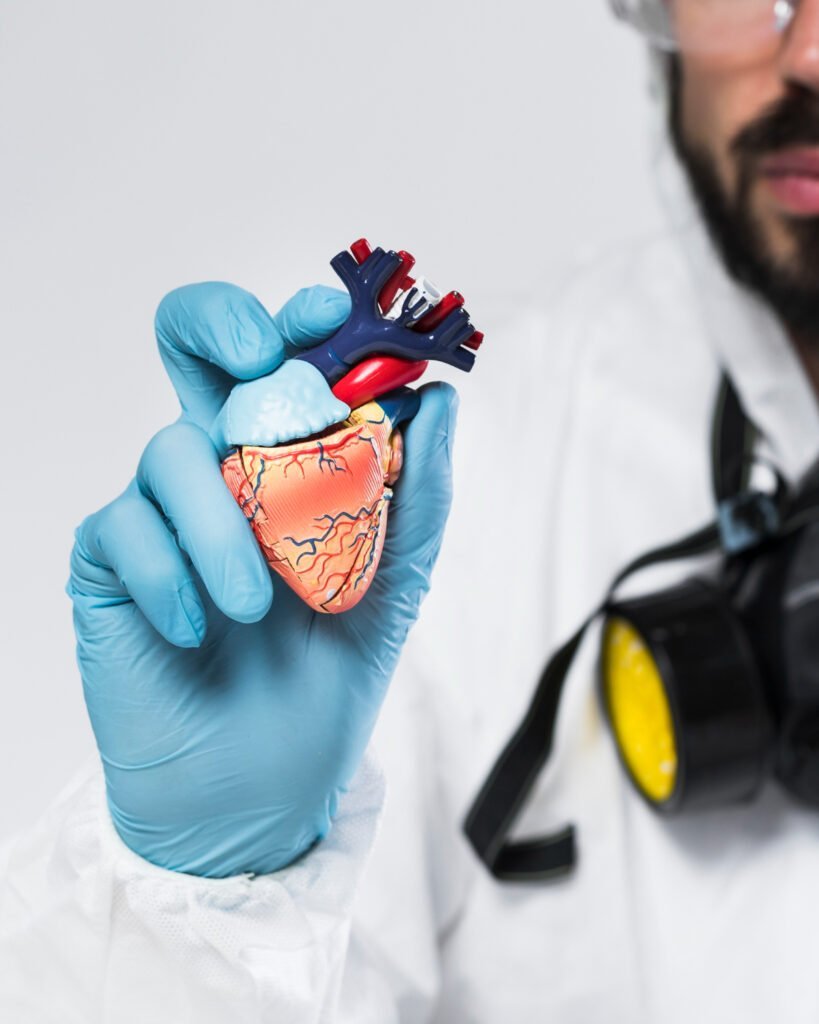Coronary Angiography
Treatments

Best Cardiologist in India
Coronary Angiography: Your Guide to This Essential Heart Procedure
Dr Amit Singh is a renowned doctor in the field of interventional cardiology. He uses exceptional skills with his empathetic talent ensuring each patient receives personalized care. Specialized in Coronary Angiography Dr. Singh serves for Angioplasty, TAVR, Echocardiography, and stress testing. ensuring the highest standard of care
Coronary Artery Disease (CAD) also known as Ischemic Heart Disease is one of the leading causes of 7 million deaths across the globe targeting 7% of the urban population and 3.1% of the rural population in India.
Best Cardiologist in Mumbai
What is coronary angiography?
Coronary angiography is a minimally invasive imaging procedure that uses X-rays to visualize the blood vessels supplying your heart. It helps doctors detect blockages or narrowing in the coronary arteries, which can lead to heart disease.
Dr. Singh is the best heart surgeon in India with the best expertise to look for

Diagnose coronary artery disease
Evaluate chest pain or angina
Evaluate further, in case of abnormal echocardiography or stress test.
Assess heart function before or after a heart attack
Plan treatments like angioplasty or bypass surgery
What is Coronary Angiography and why is it performed?
- Diagnose coronary artery disease
- Evaluate chest pain or angina
- Evaluate further, in case of abnormal echocardiography or stress test.
- Assess heart function before or after a heart attack
- Plan treatments like angioplasty or bypass surgery
How is coronary angiography done?
Is coronary angiography painful?
How long does coronary angiography take?
What are the risks of coronary angiography?
- Bleeding or bruising at the catheter site
- Allergic reactions to the contrast dye
- Kidney damage (rare)
- Heart attack or stroke (very rare)
How do I prepare for coronary angiography?
- Avoid eating or drinking for 6-8 hours before the procedure
- Inform your doctor about any medications you're taking
- Arrange for someone to drive you home afterward
What happens after coronary angiography?
- You'll rest for several hours
- Your healthcare team will monitor your vital signs
- You may be advised to drink plenty of fluids to flush out the contrast dye
- Your doctor will discuss the results and any necessary follow-up care
Can coronary angiography detect all heart problems?
Is coronary angiography the same as a stress test?
How accurate is coronary angiography?
By understanding coronary angiography, you can take an active role in your heart health.
Consult Dr. Amit Singh, for personalized advice and to determine if this procedure is right for you.
How is coronary angiography done?
The procedure involves:
Inserting a thin catheter into an artery in your arm or groin
Guiding the catheter to your heart
Injecting a contrast dye through the catheter
Taking X-ray images (angiograms) as the dye flows through your coronary arteries
Is coronary angiography painful?
Most patients experience minimal discomfort during the procedure. You’ll receive local anesthesia at the catheter insertion site and may be given a mild sedative to help you relax.
How long does coronary angiography take?
The procedure typically takes 30 minutes to an hour. However, you may need to stay in the hospital for several hours or overnight for observation.
What are the risks of coronary angiography?
While generally safe, potential risks include:
Bleeding or bruising at the catheter site
Allergic reactions to the contrast dye
Kidney damage (rare)
Heart attack or stroke (very rare)
How do I prepare for coronary angiography?
Your doctor will provide specific instructions, but generally:
Avoid eating or drinking for 6-8 hours before the procedure
Inform your doctor about any medications you're taking
Arrange for someone to drive you home afterward
What happens after coronary angiography?
After the procedure:
You'll rest for several hours
Your healthcare team will monitor your vital signs
You may be advised to drink plenty of fluids to flush out the contrast dye
Your doctor will discuss the results and any necessary follow-up care
Can coronary angiography detect all heart problems?
While coronary angiography is excellent for identifying blockages in coronary arteries, it may not detect all heart problems. Your doctor may recommend additional tests if needed.
Is coronary angiography the same as a stress test?
No, they’re different procedures. A stress test evaluates how your heart functions during physical activity, while coronary angiography directly visualizes your coronary arteries.
How accurate is coronary angiography?
Coronary angiography is considered the gold standard for diagnosing coronary artery disease, with high accuracy in detecting blockages and narrowing in the arteries.
By understanding coronary angiography, you can take an active role in your heart health.
Consult Dr. Amit Singh, for personalized advice and to determine if this procedure is right for you.
